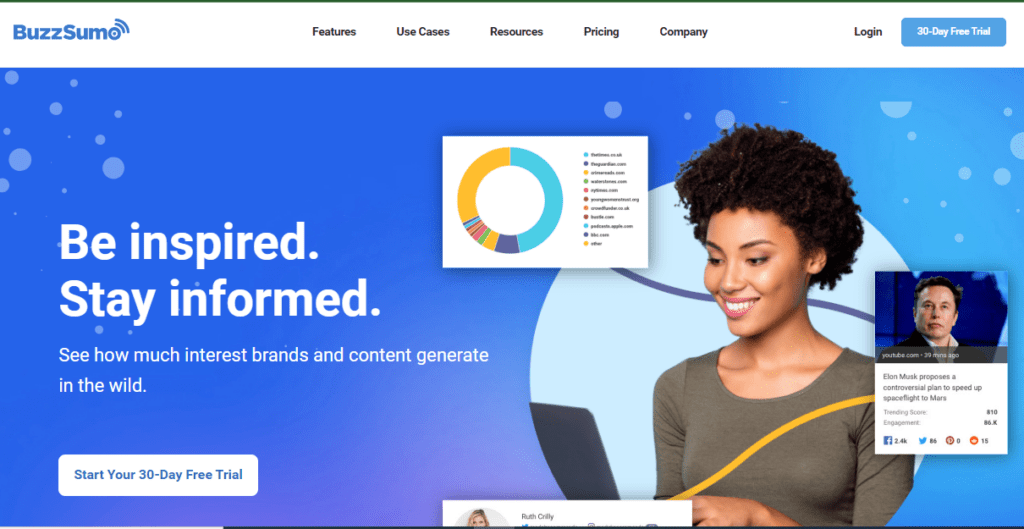The Role of Influencer Marketing in Creative Agencies: Success Stories and Lessons Learned
Meta Description: Explore the pivotal role of influencer marketing in creative agencies through impactful success stories and valuable lessons learned to enhance your marketing strategies.
In today's digital age, influencer marketing has become an indispensable tool for creative agencies aiming to elevate their marketing initiatives. Understanding the synergy between influencers and brand storytelling is crucial for professionals across the marketing spectrum. With over five years of experience in SEO, I've collaborated with more than 20 businesses to optimize their digital marketing strategies. In this post, we’ll delve into the importance of influencer marketing for creative agencies, examine successful case studies, and extract key insights from both wins and challenges within this dynamic space.
Why Influencer Marketing?
The Evolution of Marketing Strategies
As social media platforms burgeon, traditional marketing strategies struggle to resonate with audiences inundated with ads. According to Influencer Marketing Hub, the influencer marketing industry was projected to reach $13.8 billion by the end of 2021, highlighting the compelling shift in consumer engagement.
Return on Investment (ROI)
Data from the Digital Marketing Institute indicates that businesses earn an average of $6.50 for every dollar spent on influencer marketing; a substantial ROI that creatively and effectively fosters brand visibility and consumer trust.
The Significance for Creative Agencies
Creative agencies stand to gain tremendously from integrating influencer marketing into their client campaigns. Here’s how:
Enhanced Brand Visibility: Collaborating with influencers helps brands tap into pre-existing audiences, thereby expanding their reach.
Content Authenticity: Influencers often embody authenticity, thereby fostering a genuine connection with their followers—something traditional advertising fails to provide.
Adaptation to Trends: Brands can seamlessly incorporate influencer-driven content into their existing marketing strategies, keeping them ahead in an evolving digital landscape.
Success Stories of Influencer Marketing
Fashion Nova: Micro-Influencers Take Center Stage

Fashion Nova harnessed micro-influencers to cultivate a massive online presence. By recruiting smaller influencers (those with niche follower bases), the fashion brand saw a $40 million increase in sales within two years, illustrating that micro-influencers can yield cost-effective engagement compared to their macro counterparts.
Daniel Wellington: A New Era for Watch Marketing

Daniel Wellington set new standards by employing influencers to highlight their watches. Millions of Instagram users proudly showcased their timepieces, with clever hashtags and promotions resulting in overwhelming popularity—enabling the brand to capture a significant share of the millennial market. This strategic alignment with everyday influencers changed the way luxury products communicate with consumers.
Fiji Water: Making Waves at the Golden Globes
Fiji Water created a sensation at the 2019 Golden Globes by strategically partnering with influencers attending the event. Their marketing team crafted a campaign that resulted in a viral moment with a Fiji Water girl popping into the background of celebrity shots, greatly enhancing their brand perception and visibility overnight.
Lessons Learned from Influencer Marketing Mishaps
While successes abound, there have also been notable failures in influencer collaborations.
Pepsi: A Lesson in Authenticity
Pepsi’s ill-fated commercial featuring Kendall Jenner sparked backlash as audiences felt that it trivialized serious social issues. The fallout from this campaign illustrates the critical importance of authenticity and sensitivity in influencer marketing.
Fyre Festival: A Cautionary Tale
The widely publicized Fyre Festival debacle serves as a stark reminder of the ramifications of misleading influencer marketing. The promises depicted by influencers starkly contrasted the grim reality experienced by attendees, resulting in public outrage and significant reputational damage. This situation underscores the value of transparency and the necessity of reliable influencer partnerships.
Best Practices for Creative Agencies
To avoid the pitfalls and effectively leverage influencer marketing, here are essential practices for creative agencies:
Choosing the Right Influencer
Selecting the right influencer involves identifying individuals whose values align closely with the brand. It’s essential to focus on influencers with high engagement rates over sheer follower counts. Research suggests that influencers with genuine connections to their followers tend to drive better outcomes.
| Influencer Type | Engagement Rate | Ideal Use Case |
|---|---|---|
| Nano Influencers | 8-10% | Highly niche markets |
| Micro Influencers | 4-8% | Strong community engagement |
| Macro Influencers | 1-4% | Broad brand awareness |
| Mega Influencers | <1% | Wide reach with diverse audience |
Set Clear Goals and Metrics
Define SMART (Specific, Measurable, Achievable, Relevant, Time-bound) goals before launching an influencer campaign. Establish key performance indicators (KPIs) to evaluate the ROI of the campaign and adapt strategies accordingly based on analytics.
Use Appropriate Tools and Platforms
Leveraging tools such as BuzzSumo  , HypeAuditor, and Traackr can aid agencies in identifying the right influencers and measuring campaign performance effectively. These platforms streamline the research process and offer insights that can guide decision-making.
, HypeAuditor, and Traackr can aid agencies in identifying the right influencers and measuring campaign performance effectively. These platforms streamline the research process and offer insights that can guide decision-making.
Emerging Trends: The Future of Influencer Marketing
The Rise of Video Content
With platforms like TikTok gaining momentum, video content is reshaping influencer marketing. Brands like Chipotle have embraced this evolution by utilizing TikTok content creators to capture the attention of younger audiences effectively.
The Diversity of Influencers
Understanding the distinct categories of influencers—nano, micro, macro, and mega—and their specific impact on campaigns can help agencies optimize their budgets for maximum engagement and efficiency.
Regulatory Considerations
Agencies must remain aware of regulatory guidelines surrounding influencer partnerships, including FTC requirements for disclosures to maintain transparency and trust within audiences.
Conclusion
The role of influencer marketing in creative agencies is aligned with modern-day marketing transformations. By learning from success stories and failures, agencies can refine their strategies to better resonate with target audiences. As the influencer landscape continues to evolve, staying informed on trends and best practices is essential for driving successful client campaigns.
Engage with us! We invite you to share your experiences with influencer marketing in the comments below. Have you seen a strategy that worked exceptionally well, or perhaps you encountered pitfalls? Let's continue the conversation and explore what the future holds for influencer marketing together!
